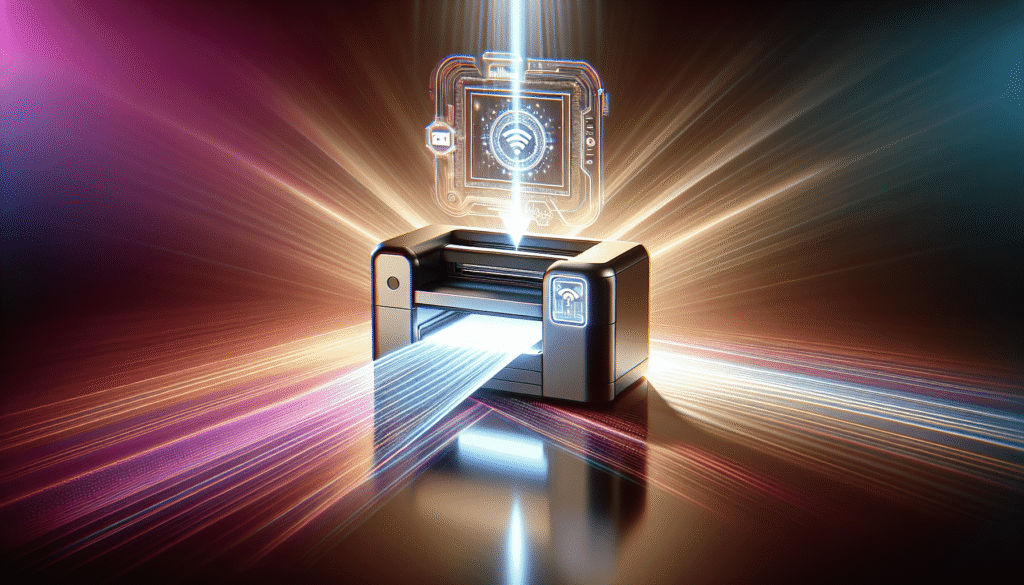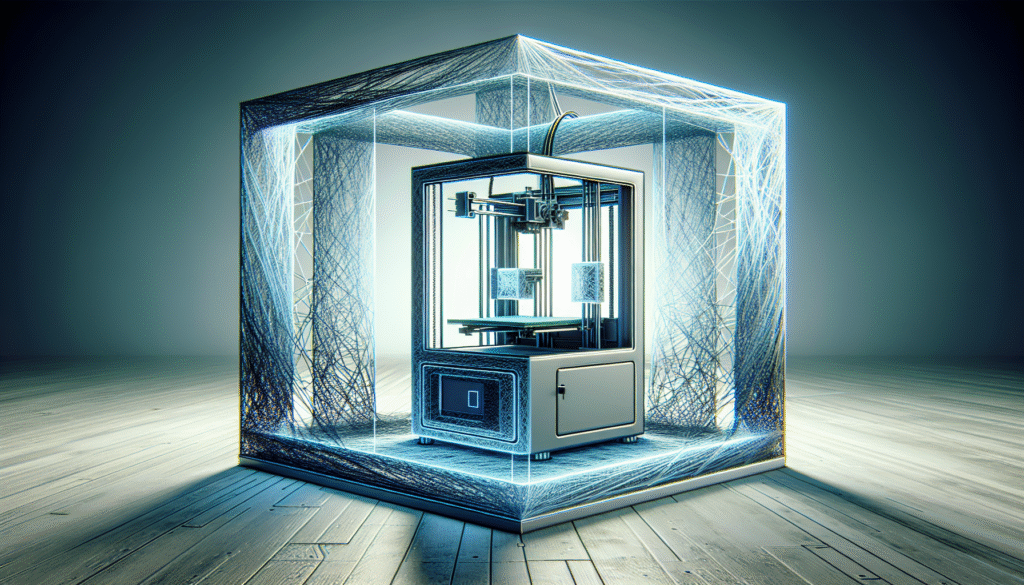Have you ever marveled at how quickly technology is reshaping our surroundings? It’s astounding to think about how 3D printing is not just sticking to its initial niche corners anymore. It has burst into the world of architecture, potentially reshaping everything from the dainty scale models on an architect’s desk to the very buildings you pass by on your morning coffee run. The artistry of architecture is meeting the precision of technology in ways previously unimagined—all thanks to 3D printing.

The Rise of 3D Printing in Architecture
3D printing has waltzed into architecture like a rock star arriving fashionably late to the party. Initially greeted with skepticism, it’s now a headliner, attracting designers and builders who find themselves unable to resist its allure. What began as a quirky technology primarily used for prototyping has now morphed into a formidable tool, revolutionizing the way architects and builders approach projects.
The Humble Beginnings of 3D Printing
You might recall a time when 3D printing was considered a novelty—more of a fancy doodad than a game-changer. Back then, it was a tool for tech enthusiasts dabbling in small projects, perhaps some knick-knacks or a part for a model airplane. But the evolution of this technology has been nothing short of breathtaking. As the materials became more sophisticated and the printers more advanced, the potential applications expanded beyond anyone’s wildest dreams.
Bridging Creativity and Functionality
Architects are a creative bunch, always pushing the limits to create designs that are not only aesthetically pleasing but functional too. 3D printing brings a third element into the mix: the chance to experiment in ways that were previously cost-prohibitive or technically impossible. With this technology, architects can turn those grand ideas, which might have been shoved into a drawer for being too fantastical, into tangible realities.
Architectural Scale Models: Tiny Giants in the Design World
Scale models are the delightful miniatures you often see in architectural firms and exhibitions. They represent buildings or groups of buildings shrunk to a size that can fit on a tabletop, giving you a sneak peek into the future without the time machine.
The Role of Scale Models in Architecture
Scale models are to architects what a sketchbook is to artists. They serve as essential tools for visualization, helping designers and clients make critical decisions. Before 3D printing, crafting these models was a painstaking endeavor, often involving tiny paints and an uncanny amount of patience. Now, you might imagine a talented artist hunched over a workbench for days, meticulously piecing together a small universe.
Transformative Benefits of 3D Printing in Model Making
Instead of just dreaming it, 3D printing allows architects to “print” these models with incredible accuracy and precision. Gone are the days of manually cutting foam or balsa wood. The 3D printer can handle complex geometries and produce detailed models quickly, which means the time once spent crafting can now be used for design refinement and innovation.
When it comes to error correction, things also move with the speed of light. With a digital model, tweaks are done with a click, and a new version can be printed faster than you can say “architectural model.” This efficiency doesn’t just benefit architects; clients can hold the future in their hands and understand it fully before a single brick is laid.
| Traditional Model Making | 3D Printed Model Making |
|---|---|
| Time-consuming | Rapid |
| Manual assembly | Automated precision |
| Limited detail | High level of detail |
| Difficult error revisions | Easy digital adjustments |

From Models to Full Buildings: Dreaming on a Larger Scale
I remember reading about single rooms being 3D printed and thinking, “Well, that’s nifty.” But then the industry started aiming for the moon—entire houses and even massive structures. It seems in architectural 3D printing, dreaming big isn’t just an option; it’s necessary.
Revolutionary 3D-Printed Structures Around the World
Globally, there have been exciting instances of 3D-printed buildings—the kind of projects that would make even the most skeptical among us raise an interested eyebrow. Take, for instance, initiatives in various parts of the world where 3D-printed residential units are built in record time, addressing housing shortages and offering an affordable solution.
Let’s also nod to urban environments where structural elements like bridges are popping up, printed layer by layer, yet strong enough to support commuters’ daily escapades. It makes you ponder the possibilities—if we can print a bridge today, what’s stopping us from printing a skyscraper tomorrow?
Economic and Environmental Impacts
The implications go well beyond construction efficiency. Economically, 3D printing could lower labor costs, reduce construction waste, and introduce never-before-seen materials, leading to more sustainable building practices. Resources are used more judiciously because only what is necessary is printed, effectively reducing waste to a shadow of its former self.
From an environmental perspective, think of the energy efficiencies to be had! Fewer resources required, quicker build times, and the potential for lower carbon emissions all add up to a planet friendlier construction process.
Materials in Architectural 3D Printing
The party doesn’t stop with stunning designs; it’s also about what we use to bring these ideas to life. What materials are invited to the festivity? You’re in for a little surprise!
Traditional vs. Innovative Materials
The classic construction materials—concrete and steel—have noble roles in 3D-printed architecture, but newer materials are making their entrance too. While concrete remains a staple, today’s innovations lend strength, longevity, flexibility, and sustainability to projects.
Materials like bio-plastics, advanced polymers, and specialized 3D printing blends are now waltzing alongside the old stalwarts. The results are buildings and structures that aren’t just lighter on resources but also future-ready, able to integrate smart technology with ease.
Comparison Table: Traditional Versus 3D Printing Materials
| Traditional Materials | Innovative 3D Printing Materials |
|---|---|
| Concrete | Specialized 3D Printable Concrete |
| Steel | Advanced Polymers |
| Wood | Bio-Plastics |
| Glass | Recyclable Composites |
Innovations in Material Science
Magic really happens when architects and material scientists put their heads together. Think biodegradable materials or 3D-printed elements capable of self-repair. Advances in material science might hold the key to battling the sustainability challenges we face, nearly reinventing the concept of a liveable building.
Limitations and Challenges
Of course, even a good party needs some bouncers—limitations and challenges are the equilibrium maintainers in our tale of architectural 3D printing.
Technological Limitations
Imagine conjuring up spectacular structures only to hit a wall because the technologies aren’t quite there yet. 3D printing still has some catching up to do in terms of printing speed, surface finish quality, and building size limitations. The technology is nearing its stride but not quite at sprint levels yet.
Regulatory and Safety Concerns
Architectural rules and regulations are as firm as a parent’s “No,” or so one would think. Governing bodies worldwide must adapt to the advent of 3D-printed constructions, a dance of progressiveness with safety. Ensuring these printed structures meet safety and regulatory standards remains crucial. Questions around durability, especially in varying climates, are part of the ongoing conversation.
What Lies Ahead: The Future of 3D Printing in Architecture
In this shimmering utopia we’ve explored, we’ve only dipped a toe into what could be a vast ocean of possibilities. The future of 3D printing within architecture promises to ignite imagination, challenge conventional norms, and redefine what’s possible.
Merging Technology with Urban Development
Imagine smart cities constructed with the help of architectural 3D printing, where “smart” isn’t just a buzzword but a lived experience. In these cities, 3D-printed structures could harmonize with rapidly developing technologies like IoT, integrating seamlessly into larger systems.
One can’t help but wonder about the potential partnerships that may develop between tech companies and traditional architectural firms. Software and hardware innovations intertwined with building practices could lead to swift advancements in urban habitat design and functionality.
Foreseeable Innovations and Concepts
The horizon is brimming with opportunities for innovation where even the wildest ideas could become mainstream. Picture buildings that adapt to occupant needs, modular units that can be configured and reconfigured at will, and even structures designed to heal themselves with no human intervention. These concepts tease what the next decade might hold.
Closing Thoughts
As 3D printing nudges its way into the architectural landscape, we’re witnessing the dawn of a new era—one where creativity is limited only by the bounds of our imagination. It’s a thrilling time, filled with anticipation for what will come next. From scale models that transform into artistic masterpieces to full-scale buildings that evolve with time, architectural 3D printing invites us all to dream bigger and build better.
So, let your mind wander a bit. Who’s to say the structures of tomorrow won’t reimagine not just our skylines but our very way of living? The once distant dreams are now print commands away from reality, and I, for one, can’t wait to see what we’ll print next.


